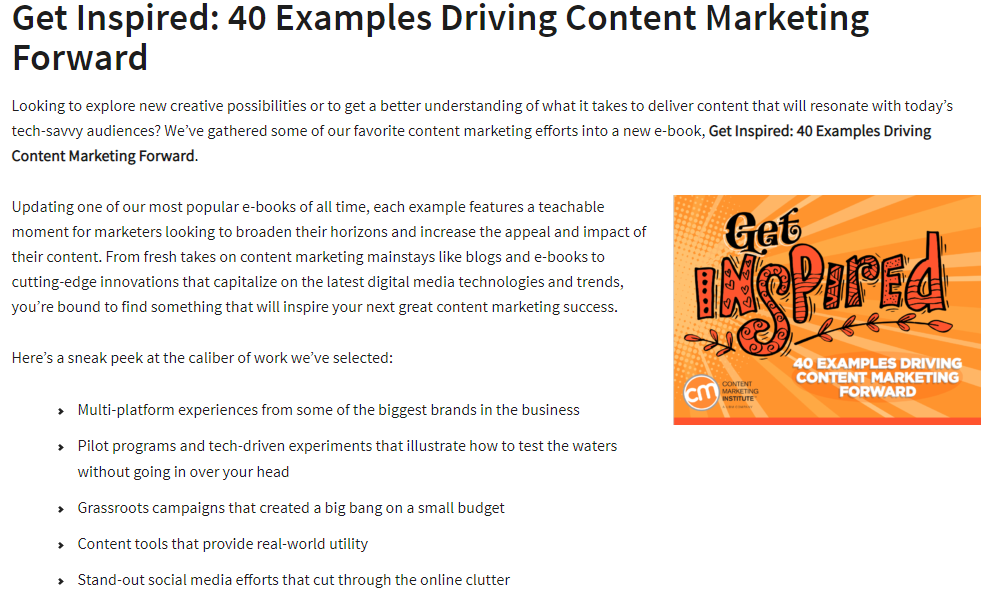The Ultimate Guide to Content Marketing in 2020
Starting this article with the same repetitive saying about content being king almost feels redundant. It has been said, written and used so many times across platforms and articles, that it sort of lost all meaning and now feels mostly like a buzzword, thrown around to prove a point.
Yet, here we are, using it once more since we do believe that content is king and not just any type of content. We’re referring to that particular type of content that ties our marketing strategy together and brings conversion rates through the roof — the messaging, which makes potential customers interested in what we have to offer.
With that, content marketing is an entirely different ball game than any other professional type of writing. The structure of an online marketing article is altogether different, and it has nothing to do with its quality, length, or ability to captivate the readers.
In addition to being creative and well-written, marketing articles must also be friendly to search engines and increase the authority of the hosting website while keeping up with strict rules and regulations.
What’s the difference between content marketing and other types of professional content writing?
Every type of professional writing is based on a different set of rules. Academic article writing is structured based on other scholarly sources, ones that have to be approved and published through an educational reference, and all sources must be relevant, reliable, and list the names of the researcher and publishing year.
Academic writers must follow these strict sets of rules. Otherwise, their article will be disqualified, no matter how excellent or resourceful the content is.
Journalism is an entirely different type of professional writing, and while its a lot less strict, it also has its own set of rules to follow, no matter if it’s published online or in print. With that, journalism is a lot more liberal. Some articles are based on ‘the 5 W’s’ method, in which an article must include clear answers to the ‘who, what, why, when and where’ questions.
But some can be a thought piece without any predetermined structure in mind, as long as it’s captivating and compelling, it can work.
When it comes to using content to market a product or a service, the writing method, skill, and set of rules are completely different. Yes, it has more flexibility, but it’s mainly because of the digital marketing landscape and its tendency to change all the time. With that, the idea of content marketing is quite simple – it has to sell. Every word has to be written with the understanding that it’s a part of a broader strategy and that its primary purpose is to convince your target audience to convert or at least consider it.
Why should every marketer invest in content marketing?
1. Content is an authority – It doesn’t matter if you’re selling a product, a service, or just yourself as a brand. Creating high-quality content will help you sustain an authoritative image amongst your peers. Creating content about innovations that influence your industry before anyone else will set you apart from your competitors. Good content marketing will make your audience believe that your brand is trustworthy and professional and that the solutions offered are the best there are.
2. Content is communication – 78% of consumers state that relevant and personal content is the decisive factor in the decision before purchasing a service or a product. Content marketing is the way you communicate and build a stable, long-lasting relationship with your audience. Good marketing content is one that can be convincing and offer a solution to your customers’ pain points.
3. Content marketing is for everyone – Regardless of the size of your brand or if your audience is a niche or not. Every business can and should benefit from content marketing. It is the core of every marketing activity and what sets the pros apart.
What types of content exist in digital marketing?
Any piece of text referring to your brand or product is a type of content that can be used for marketing purposes; amongst them, you will find:
- Website content – Feature and service pages, pricing and FAQs, product guides, and more.
- Advertising content – Ads and banners, video scripts, PPC campaigns, Taboola campaigns, social media campaigns, and more.
- Audience communication – Landing pages and sign-up forms, email marketing content and automated workflows, transactional messaging, organic content on social media, and customer service chatbots.
- Articles and blogs – Blog content based on SEO keyword research and a predetermined strategy to reach the highest possible audience volume from search engines. It also includes content collaborations with relevant brands to increase brand awareness and grow the brand’s strength online.
Here’s a great example by MINTEL that turned content into a product and provides its audience with statistical data and information about different industries.
So what is quality content and how do we measure it?
On paper, it’s a non-issue. Articles are measured by the traffic they provide, which can be easily assured through Google Analytics or other tools. When a content marketer wants to see the success rate of his activity, he will most likely be looking at the number of users who visited the website and how many of them are unique users. And he will also probably look into the bounce rates, pages visited per session, and session duration. This is an elementary statistical data that offers a broad view of the activity and its success.
With that, it’s still challenging to measure the quality of the content using only this method and sometimes might feel too arbitrary.
Here’s an example, you wrote an article and promoted it across your main marketing channels and waited three months for it to reach a high search volume, but nothing’s happening. How can you tell if your article is the issue or if it’s your channels? Maybe you misunderstood your target audience or just used the wrong keywords?
The best ways to measure your content marketing are:
- Accurately define your target audience – When you write your content, make sure you know exactly who your audience is. Who is the person on the other side of the screen? What does he need, why did he click on your link, what are his pain points? How can you solve them?
- Accurately define your marketing channels – Does this person visit the channels you use to market your content? Perhaps your potential audience is scrolling through Instagram story while you promoted it on Facebook?
- Know your customer journey – Your customers are going through a journey on their way to conversion. Did you content to a particular stage of the customer journey?
- Maintaining a tone of voice – Keeping up the same tone of voice throughout all of your digital marketing channels is essential. Moreover, go back to the 1st item on this list and make sure that you also match your TOV to your target audience.
Now, after all these criteria are set, you will be able to measure your entire marketing activity better. For example, use AB testing to check your activity. Try phrasing the same ads differently and use the same design on both; this is an excellent way to see what works better with your target audience.
Testing is possible with all types of content, and learning from each test will increase your content marketing ROI and bring higher traffic rates to your website.
Here’s a great example by Content Marketing who use gated content to collect leads.
Here are some other important tips when it comes to content marketing strategy:
- Stay up to date with search engine changes – Follow newsletters by Neil Patel or Moz, read Google’s updates and always be aware of the changes happening with search engine optimization. Remember, a good SEO strategy should be the pinnacle of your content marketing strategy; without it, your 2,000-word whitepaper might stay unread.
- Create a clear format – Your article structure should simplify the reading process. Create clear headlines, shorter sentences, and add images or videos. Make sure your content fits any screen.
- Stay relevant to the brand – You worked so hard on creating a marketing persona, don’t write content if it’s not relevant to them. If your brand is all about vintage fashion, all articles must correlate with this industry.
- Maintain a publishing schedule – Your audience loves structure as much as you do, working with a strict publishing schedule will help your brand maintain a reliable image and keep your audience interested and engaged.
- Be unique – Never copy content, never work with writers who copy content, or even rephrase it in an obvious way. Stay original and build a content marketing master’s reputation.
To sum up, your digital marketing efforts, email marketing, and automation strategy could be amazing as long as they are based on useful, engaging, and high-quality content.
Read more:
15 Professional Email Subject Line Ideas
Everything You Need to Know About Email Marketing Blacklists




